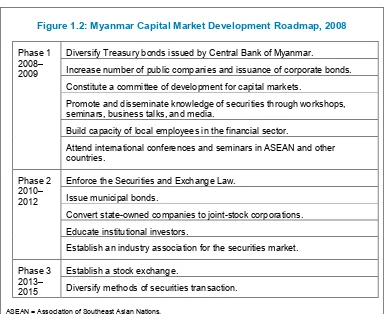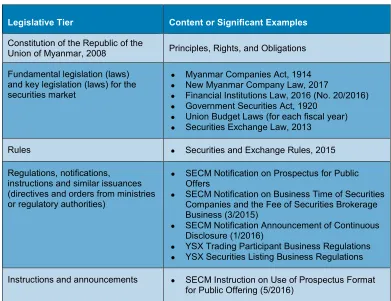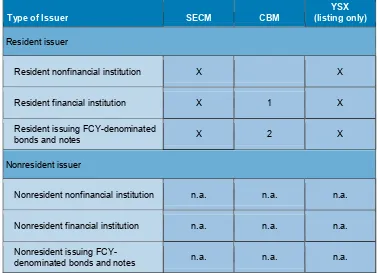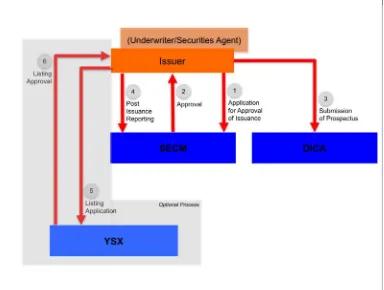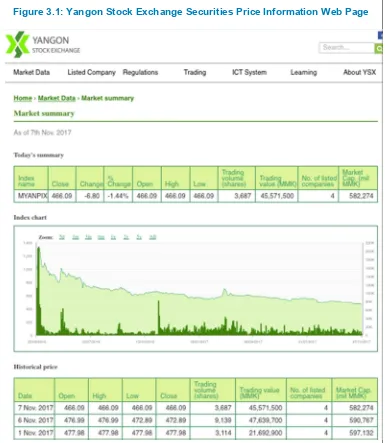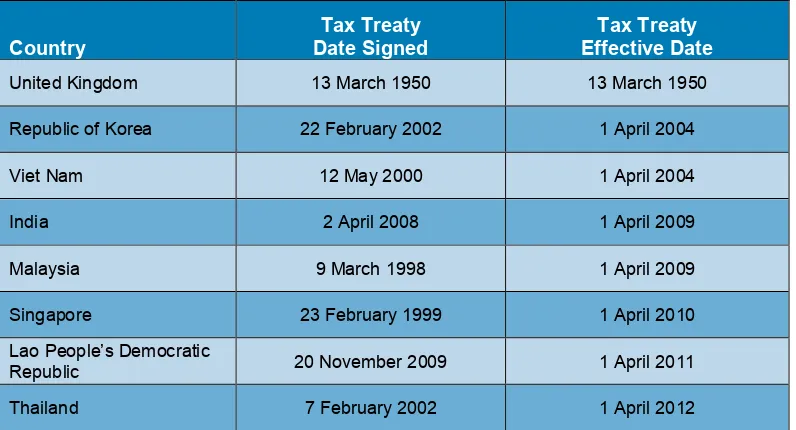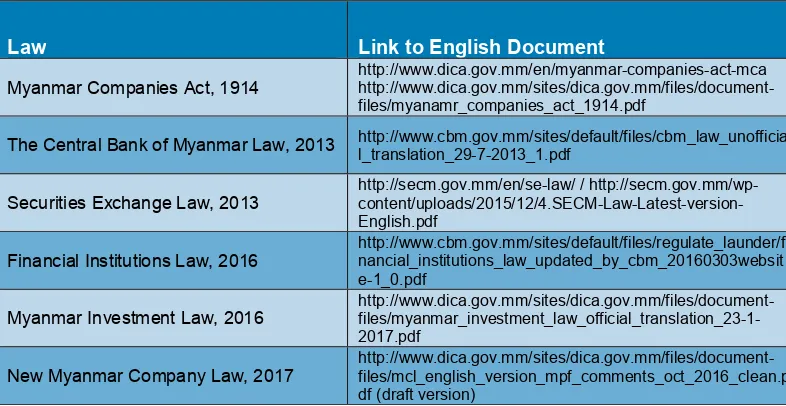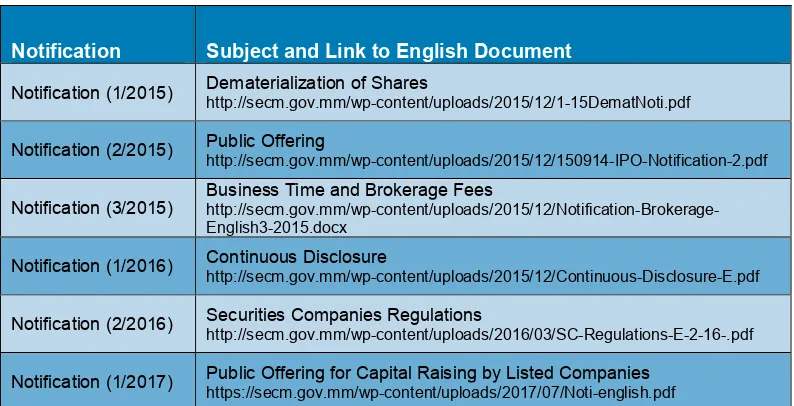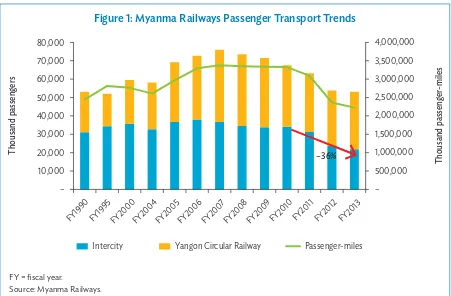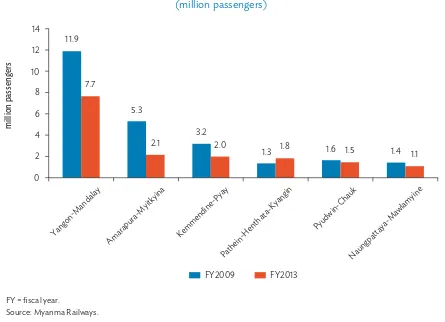4/23/2018 Myanmar and ADB | Asian Development Bank
https://www.adb.org/countries/myanmar/main 1/9
Myanmar
Myanmar and ADB
In the Spotlight
Emerging from decades of economic and political isolation, Myanmar is striving for inclusive economic growth and poverty reduction.
The country has strong potential for broad economic expansion, possessing abundant natural resources, a strategic location at the
crossroads of Asia, a young population, and a sizable market with wide-ranging investment opportunities. Successful national
elections, held in November 2015, represented an important milestone in Myanmar’s transition.
ADB operations in Myanmar focuses on building human resources and capacity, creating an enabling economic environment, and
expanding access and connectivity.
https://www.adb.org/countries/myanmar/main 2/9 News from Country Offices »
All
Latest
11 Apr 2018
Continued Reforms Key to Myanmar's Economic Growth
Myanmar’s economy is projected to stay on a steady growth path over the next two years, supported by economic reforms, strong
global growth, and higher foreign direct investment flows, according to a new ADB report launched today.
Read the ADB and Myanmar fact sheet.
Follow us on Twitter
@ADB_Myanmar »
Like us on Facebook
4/23/2018 Myanmar and ADB | Asian Development Bank
https://www.adb.org/countries/myanmar/main 3/9
News Release »
Publication »
06 Apr 2018
ADB President Affirms Support for Infrastructure Investment, Financial Inclusion at ASEAN Meeting
04 Apr 2018
Promoting Green Local Currency Bonds for Infrastructure Development in ASEAN+3
https://www.adb.org/countries/myanmar/main 4/9
Load more
ADB President Takehiko Nakao participated in the 21st Association of Southeast Asian Nations (ASEAN) Finance Ministers’ and
Central Bank Governors’ Meetings in Singapore on 5-6 April.
View all projects in this country
Projects in Myanmar
PROPOSED
50381-006
Greater Mekong Subregion East-West Economic Corridor Highway Development Project
50109-002
Second Mandalay Urban Services Improvement Project
50020-002
Power Network Development Project
50218-002
4/23/2018 Myanmar and ADB | Asian Development Bank
https://www.adb.org/countries/myanmar/main 5/9
47087-003
Greater Mekong Subregion Highway Modernization Project
APPROVED/ACTIVE
51242-001 (26 Oct 2017)
Resilient Communities Development Project
50109-001 (20 Jul 2017)
Preparing the Second Mandalay Urban Services Improvement Project
50173-001 (31 May 2017)
Support for Strengthening Business Climate
50381-001 (21 Apr 2017)
Greater Mekong Subregion East-West Economic Corridor Highway Development
50403-001 (31 Mar 2017)
Strengthening Climate and Disaster Resilience of Myanmar Communities
CLOSED
48291-001 (30 Sep 2016)
Support for Sanitary and Phytosanitary Arrangements Development
48903-012 (31 Mar 2015)
INTERCONNECTION AND ELECTRIFICATION GRID STUDIES
47227-001 (30 Apr 2017)
Skills Development for Inclusive Growth
47159-001 (31 Dec 2016)
Financial Sector Reforms
47127-001 (30 Jun 2016)
https://www.adb.org/countries/myanmar/main 6/9
About Tableau
Source: Basic Statistics 2017. View on the Data Library
Fast Facts
Funding Information
4/23/2018 Myanmar and ADB | Asian Development Bank
https://www.adb.org/countries/myanmar/main 8/9
MYANMAR
Main
Overview
Strategy
Economy
Poverty in Myanmar
Project Results Data
Opportunities
Publications and Documents
Translations in Myanmar Language
News and Multimedia
4/23/2018 Myanmar and ADB | Asian Development Bank
https://www.adb.org/countries/myanmar/main 9/9
https://www.adb.org/publications/myanmar-fact-sheet 1/2
Publications
Asian Development Bank and Myanmar: Fact Sheet
ADB supports Myanmar in promoting inclusive and sustainable economic growth, with focus
on infrastructure, education and training, and agriculture and rural development.
ADB commenced reengagement with Myanmar in early 2012. ADB has since been supporting the
country’s national development strategies and its national priority programs in collaboration with other
development partners.
In March 2017, ADB approved its first full country partnership strategy, 2017–2021 for Myanmar. The
strategy is fully aligned with Myanmar’s national development agenda and other strategic priorities of
the country’s new administration. The ADB program in Myanmar aims to promote sustainable and
inclusive economic development, and job creation for poverty reduction. It focuses on infrastructure
for transport, energy, and urban development; education and training; and rural development.
cb
Download
Free: 236.41 KB
This work is licensed under a Creative Commons Attribution 3.0 IGO License
Related
More on ADB's work in Myanmar
4/23/2018 ADB-Myanmar Partnership Strategy | Asian Development Bank
https://www.adb.org/countries/myanmar/strategy 1/3
Myanmar
ADB-Myanmar Partnership Strategy
Myanmar is undergoing a historic transformation towards democracy, a market economy, and peace and stability. A new government
took office in 2016 with strong popular support and international goodwill, and is working to enable inclusive and sustainable growth.
These efforts will leverage Myanmar’s strengths and high development potential, including its strategic location within Asia. ADB has a
unique opportunity to support Myanmar in this formative period, as outlined in the country partnership strategy (CPS) for Myanmar,
2017‒2021.
While Myanmar has enormous potential, significant development challenges require attention, including:
1. meeting deficits in infrastructure and human capital to boost social and economic development;
2. maintaining macroeconomic and fiscal stability in a challenging global economic environment; and
3. accelerating the reform process to achieve structural and institutional change; enhance the business environment;improve
capacities and governance standards; and address environmental issues and climate change.
Following reengagement with Myanmar in 2012, ADB implemented an interim CPS; undertook a range of capacity-building initiatives
and knowledge work; and made investments in energy, transport, education and training, and urban and rural development.
The CPS, 2017‒2021 aims to support the government in laying the foundations for sustainable and inclusive economic development,
and job creation for poverty reduction. ADB operations will focus on:
1. improving access and connectivity to connect rural and urban areas and markets, and to link Myanmar with the regional and
global marketplace;
2. strengthening human capital to promote a skilled workforce and increased employment, and enable the poor and
disadvantaged to benefit from economic growth; and
3. promoting structural and institutional reform to support the modernization of the economy.
https://www.adb.org/countries/myanmar/strategy 2/3 The Public Communications Policy (PCP) recognizes that transparency and accountability are essential to development effectiveness. It establishes the disclosure requirements for documents and information ADB produces or requires to be produced.
The Accountability Mechanism provides a forum where people adversely affected by ADB-assisted projects can voice and seek solutions to their problems and report alleged noncompliance of ADB's operational policies and procedures.
In preparing any country program or strategy, financing any project, or by making any designation of, or reference to, a particular territory or geographic area in this document, the Asian Development Bank does not intend to make any judgments as to the legal or other status of any territory or area.
Latest Country Strategies and Business Plans
Myanmar: Country Operations Business Plan (2017-2019)
Myanmar: Country Partnership Strategy (2017-2021)
GMS Economic Cooperation Program: Regional Investment Framework 2022
VIEW MORE
MYANMAR
Main
Overview
Strategy
Country Planning Documents
Economy
Poverty in Myanmar
Project Results Data
Opportunities
Publications and Documents
4/23/2018 Continued Reforms Key to Myanmar's Economic Growth | Asian Development Bank
https://www.adb.org/news/continued-reforms-key-myanmars-economic-growth 1/3
News and Events News Releases
Continued Reforms Key to Myanmar's Economic Growth
YANGON, MYANMAR (11 April 2018) — Myanmar’s economy is projected to stay on a steady growth path over the next two years,
supported by economic reforms, strong global growth, and higher foreign direct investment flows, according to a new Asian
Development Bank (ADB) report launched today.
“With risks mitigated, Myanmar should be able to stay on a steady economic growth path in the medium-term,” said Newin Sinsiri,
ADB Country Director for Myanmar. “Myanmar should be able to leverage limited public resources by effectively engaging
development partners, foreign investors, and the domestic private sector to help finance its staggering infrastructure requirements,
narrow regional socioeconomic disparities, and support the long-term development agenda.
The
Asian Development Outlook (ADO) 2018
says Myanmar’s economy will pick up speed just as inflation eased and the current
account deficit widened. The report, which is ADB’s flagship annual economic publication, estimates Myanmar’s growth at an
annualized rate of 6.8% in the six-month period ending in September 2018 and 7.2% in the full fiscal year ending in September 2019.
Agriculture, which provides about 30% of gross domestic product, will grow robustly, with better weather and favorable commodity
prices. The industry and service sectors are expected to grow faster over the next two years, thanks to robust manufacturing
production buoyant telecommunication services.
A risk to the outlook would be lackluster progress in economic reforms. Although measures have been introduced to deepen the
capital market and better regulate banks, significant work remains in economic, social, and institutional reforms.
Encouragingly, the progress in December 2017 toward enacting a new company law can assure foreign investors that corporate
reform will continue. Similarly, a government initiative to formulate a 238-point economic policy agenda, set out in the draft Myanmar
Sustainable Development Plan, will likely keep investors engaged. Building on these initiatives, policymakers should implement
reforms expeditiously and effectively to buoy investor confidence and attract sizable foreign direct investments in the years to come.
ADB, based in Manila, is dedicated to reducing poverty in Asia and the Pacific through inclusive economic growth, environmentally
sustainable growth, and regional integration. Established in 1966, it is owned by 67 members—48 from the region.
https://www.adb.org/news/continued-reforms-key-myanmars-economic-growth 2/3
Media Contact
Zaw, Tin Tun
External Relations Officer, Myanmar Resident Mission (MYRM)
+95 1860 3433-3455, extension 5028
+95 9 5023197
E-mail contact form
Churchill, Erik
Communications Specialist
+63 999 999 1905
E-mail contact form
Related
Asian Development Outlook (ADO) 2018: How Technology Affects Jobs
Infographic: Asian Development Outlook 2018: Growth Outlook
Asian Development Outlook (ADO) Series
ADB-Myanmar Partnership Strategy
Asian Development Bank and Myanmar: Fact Sheet
More on ADB's Work in Myanmar
Myanmar: Greater Mekong Subregion Highway Modernization Project
Project Name Greater Mekong Subregion Highway Modernization Project Project Number 47087-003
Country Myanmar
Project Status Proposed Project Type / Modality of
Assistance Loan
Source of Funding / Amount Loan: Greater Mekong Subregion Highway Modernization Project
concessional ordinary capital resources lending / Asian Development Fund US$ 340.00 million ASEAN Infrastructure Fund US$ 20.00 million Strategic Agendas Environmentally sustainable growth
Inclusive economic growth Regional integration
Drivers of Change Governance and capacity development Knowledge solutions
Partnerships
Private sector development
Sector / Subsector Transport - Road transport (non-urban) Gender Equity and
Mainstreaming Some gender elements
Description The project will rehabilitate and improve about 280 km of highways, improve safety of the Yangon-Mandalay expressway, and nance detailed technical preparation of a new highway project, all along Myanmar's Greater Mekong Subregion (GMS) East-West Economic Corridor (EWEC) and North-South Economic Corridor (NSEC).
Project Rationale and Linkage to
Country/Regional Strategy The project is instrumental to achieving the Country Partnership Strategy's objective to developthe GMS corridors. It supports the strategy's emphasis on transport infrastructure improvements, reforms, and private sector development. The project forms part of a sequence of gradually larger and more value-adding projects in the transport sector in Myanmar.
Impact All-weather and safe road transport infrastructure developed in order to ful ll social and economic transport needs of the nation (National Transport Sector Development Master Plan)
Outcome More e cient and safer movement of goods and people along the GMS EWEC and North- South corridor in Myanmar
Outputs 1. Highways rehabilitated 2. Expressway safety improved
3. Detailed technical preparation for GMS EWEC highway development project completed Geographical Location Bago, Pathein, Thilawa, Yangon
Safeguard Categories
Environment B
Involuntary Resettlement A
Indigenous Peoples C
environmental impacts. The dominant land use along the project road is agricultural, which is primarily for rice production. The road corridor is not within undisturbed landscapes, mangrove areas, or near
environmentally-protected areas. The project will not encroach on environmentally-sensitive sites. The government is preparing IEEs to meet the requirements of ADB's Safeguard Policy Statement (SPS), which will be publicly disclosed. Each IEE will include an Environmental Management Plan (EMP). The EMP is to be incorporated into the project's civil works contract documentation. IEEs will also include a grievance redress mechanism to facilitate resolution of construction-related environmental impacts.
Involuntary
Resettlement The project is tentatively categorized as B for involuntary resettlement. The project will remain within theright of way, but is expected to impact structures encroaching on the right of way and located in the project's immediate corridor of impact. Resettlement surveys were ongoing in April 2017. A ected households will be consulted and informed about the proposed project, SPS, and proposed assistance due to displacement. The government is preparing resettlement plans, which will be publicly disclosed. Indigenous Peoples The project is categorized as C for indigenous peoples.
Stakeholder Communication, Participation, and Consultation
During Project Design Consultation meetings were organized in January 2017 for the preparation of the IEEs. Additional consultation meetings will be organized in April and May 2017 as part of the preparation of the resettlement plans.
During Project
Implementation The Project Management Unit along with its Supervision consultants will conduct stakeholders consultationprior to and during road construction.
Business Opportunities
Consulting Services A
consulting rm will be recruited for supervision, institutional strengthening and design services, for outputs 1 and 2. A separate consulting rm will be recruited for output 3. Both consultants will be recruited following ADB's Guidelines on the Use of Consultants by Asian Development Bank and Its Borrowers (2013, as amended from time-to-time), using the quality and costs based selection procedure and full technical proposal.
Responsible ADB O cer Veron-Okamoto, Adrien Responsible ADB Department Southeast Asia Department
Responsible ADB Division Transport and Communications Division, SERD Executing Agencies Ministry of Construction
Department of Highways O ce Building No. 11 Naypyitaw, Myanmar
Timetable
Concept Clearance 17 Mar 2017
Fact Finding 28 Feb 2017 to 08 Mar 2017
MRM 03 Oct 2017
Approval
-Last Review Mission
-Last PDS Update 28 Mar 2018
Project Page https://www.adb.org/projects/47087-003/main
Request for Information http://www.adb.org/forms/request-information-form?subject=47087-003 Date Generated 23 April 2018
Myanmar: Power Network Development Project
Project Name Power Network Development Project Project Number 50020-002
Country Myanmar
Project Status Proposed Project Type / Modality of
Assistance Loan
Source of Funding / Amount Loan: Power Network Development Project
concessional ordinary capital resources lending / Asian Development Fund US$ 298.90 million Strategic Agendas Environmentally sustainable growth
Inclusive economic growth Drivers of Change Private sector development
Sector / Subsector Energy - Electricity transmission and distribution Gender Equity and
Mainstreaming No gender elements
Description The project will construct (i) 16.6 km transmission line between Ahlone and Thida substations with a 230/66/11kV 150 MVA Ahlone substation and 230/66/11kV (3x150 MVA) GIS Thida substation; (ii) 286km Mawlamyine-Ye-Dawei transmission line with 230/66/11kV (2 x 50 MVA) Ye substation and 230/66/11kV (2 x 50 MVA) Dawei substation; and (iii) upgrade and construct 48 new 66/33/11kV substations with 820 km distribution lines in the following states and regions: Aeyawardy, Bago, Mon, Kayin and Rakhine. The project will also install a computerized transmission asset management systems (CAMS) and a computerized customer billing system (CCBS) to improve operational eciency and reduce losses in the transmission and distribution systems.
Project Rationale and Linkage
to Country/Regional Strategy The core developmental problem of Myanmar's power sector is insucient and obsolete transmissionand distribution infrastructure and lack of generating capacity to adequately supply electricity to support economic development and poverty reduction. With forecasted high economic growth, Myanmar's electricity demand is expected to rise vefold from 3070 megawatt (MW) in 2017 to 14500 MW in 2030. The project will contribute to increasing electricity supply to support inclusive and sustainable development, and to achieving the country's plan of universal electricity access by 2030.
Impact Universal electricity access achieved
Outcome Capacity and operational eciency of power transmission and distribution increased Outputs 3 new 230 kV transmission lines and 5 new substations with capacity of 700 MVA added to
Myanmar's power transmission network
New distribution facilities added to the distribution systems in Ayeyarwady, Bago, Mon, Rakhine, and Kayin regions
New CAMS and CCBS installed Geographical Location Nation-wide
Safeguard Categories
Environment B
Involuntary Resettlement B
Indigenous Peoples C
Aspects management plan was prepared. These reports were based on the results of site visits, discussions with local authorities and bene ciaries, and the use of secondary sources of information such as similar projects. The assessment provided that expected impacts will occur during the di erent phases of the project development. The project was initially categorized as A due to the long Mawlamyine-Ye-Dawei transmission line potentially encroaching a biodiversity area. However, the nal alignment chosen as a result of due diligence completely avoided all environment sensitive areas, hence, the environment assessment con rmed that the project is not considered as highly complex and sensitive and is now re-categorized as B.
Involuntary
Resettlement Land acquisition for the project will result in physical and economic displacement. A total of 39 hectares forland (38 hectares for distribution component and 1 hectare for transmission component) will be acquired permanently to be used for tower footings and substations. The project will have an impact on a total of 814 households. Of these, 18 households will be severely a ected: nine households will lose their primary residential structures under the transmission component, and the other nine households will lose more than 10% of the total land holdings or income under the distribution component.
Indigenous Peoples Three of the ve states, namely Mon, Kayin and Rakhine have ethnic groups residing in the project area. The project will not acquire lands that are traditionally used by the ethnic groups nor cause any adverse impact on their identity, social, culture, or spiritual importance or interfere with their socio-cultural beliefs and livelihood systems. Ethnic group communities will bene t from project activities through employment opportunities and household electri cations. However, the project also presents minor risks and challenges concerning ethnic groups, particularly in terms of ensuring that ethnic groups are not marginalized during the project implementation with regards to employment opportunities and access to electricity. The project will ensure adequate consultations and a comprehensive project management approach in project areas where there are already ethnic group organizations providing parallel social services and community infrastructure. REGDPs have been developed with the approaches and entries that ensure project design and implementation shall foster full respect of ethnic groups and full respect for all a ected households and stakeholders and that the ethnic groups (i) do not su er adverse impacts as a result of the project, (ii) have equitable access to bene ts of the project, and (iii) can participate actively in the project.
Stakeholder Communication, Participation, and Consultation
During Project
Design Analyses for the following will be conducted: participation and empowerment; social impacts assessment;employment opportunities; gender issues and Gender Action Plan; ethnic minority issues, if applicable; consultations with project a ected peoples, project bene ciaries, stakeholders, civil society organizations to identify issues, propose measures for addressing them through consultations; conduct speci c con
sensitive consultations in all relevant project areas. During Project
Implementation Continuous consultation and participation process will involve a stakeholder analysis followed by subsequentconsultations with various groups. It is planned to conduct consultations at the household and community level, regional and national government ocials, development partners, nongovernmental organizations, and
commune- and village- level ocials and bene ciaries. A series of focus group discussions will be undertaken as part of the socio-economic analysis.
Business Opportunities
Consulting
Services The project implementation consultants for transmission and distribution components will be recruited inaccordance with ADB's Guidelines on the Use of Consultants (2013, as amended from time to time). An estimated 281 person-months of consulting services will be required for the transmission component and 300 person-months for the distribution component. The consultants will support the project implementation unit in project
implementation, monitoring and reporting; and strengthen the institutional and operational capacity of the EA/IAs. Procurement All procurement of goods and works, and advance contracting will be undertaken in accordance with ADB's
Procurement Guidelines (2015, as amended from time to time).
The project involves the procurement of three (3) plant-design, supply and installation and one (1) IT product contract under the transmission component; and seven goods and one (1) IT product contract under the
distribution component. International competitive bidding with single-stage one-envelope method will be used for procurement of these contracts. ADB's prior review procedures will be followed. Line installation works, substation installation works, and supply of concrete poles will be undertaken through national competitive bidding using ADB's standard bidding documents for small works. Before the start of any procurement, ADB and the government will review the public procurement laws of the central and state governments to ensure consistency with ADB's Procurement Guidelines (2015, as amended from time to time).
Responsible ADB Ocer Bui, Duy-Thanh
Responsible ADB Department Southeast Asia Department Responsible ADB Division Energy Division, SERD
Executing Agencies Ministry of Electricity and Energy No. B-07, Yadana Shwe Pyi St., Zaya Theidi Ward, Nay Pyi Taw
Concept Clearance 26 Sep 2016
Fact Finding 22 Jan 2018 to 02 Feb 2018
MRM 04 Apr 2018
Approval
-Last Review Mission
-Last PDS Update 27 Mar 2018
Project Page https://www.adb.org/projects/50020-002/main
Request for Information http://www.adb.org/forms/request-information-form?subject=50020-002 Date Generated 23 April 2018
Myanmar: Preparing the Second Mandalay Urban Services Improvement Project
Project Name Preparing the Second Mandalay Urban Services Improvement Project
Project Number 50109-001
Country Myanmar
Project Status Active
Project Type / Modality of Assistance Technical Assistance
Source of Funding / Amount TA 9345-MYA: Preparing the Second Mandalay Urban Services Improvement
Project
Technical Assistance Special Fund US$ 750,000.00 Urban Climate Change Resilience Trust Fund under the Urban
Financing Partnership Facility US$ 225,000.00 Strategic Agendas Environmentally sustainable growth
Inclusive economic growth
Drivers of Change Governance and capacity development Partnerships
Sector / Subsector Transport - Urban public transport
Water and other urban infrastructure and services - Urban sewerage - Urban solid waste management - Urban water supply
Gender Equity and Mainstreaming E ective gender mainstreaming Description
Project Rationale and Linkage to
Country/Regional Strategy The proposed project will improve urban environment and public health conditions inMandalay City through improvement of urban infrastructure and services. Impact
Project Outcome
Description of Outcome Progress Toward Outcome
Implementation Progress
Description of Project Outputs
Status of Implementation Progress (Outputs, Activities, and Issues)
Geographical Location Mandalay
Summary of Environmental and Social Aspects
Environmental Aspects Involuntary Resettlement Indigenous Peoples
Stakeholder Communication, Participation, and Consultation
During Project Design During Project Implementation
Responsible ADB Department Southeast Asia Department
Responsible ADB Division Urban Development and Water Division, SERD Executing Agencies Mandalay Regional Government
Corner of 31st Street and 72nd Street Chan Aye Thar San Township Mandalay, Myanmar
Timetable
Concept Clearance
-Fact Finding
-MRM
-Approval 20 Jul 2017
Last Review Mission
-Last PDS Update 27 Mar 2018
TA 9345-MYA
Milestones
Approval Signing Date E ectivity Date Closing
Original Revised Actual
20 Jul 2017 02 Jan 2018 02 Jan 2018 30 Sep 2019 -
-Financing Plan/TA Utilization Cumulative Disbursements
ADB Co nancing Counterpart Total Date Amount
Gov Bene ciaries Project Sponsor Others
750,000.00 225,000.00 0.00 0.00 0.00 0.00 975,000.00 20 Jul 2017 0.00
Project Page https://www.adb.org/projects/50109-001/main
Request for Information http://www.adb.org/forms/request-information-form?subject=50109-001 Date Generated 23 April 2018
Myanmar: Second Mandalay Urban Services Improvement Project
Project Name Second Mandalay Urban Services Improvement Project
Project Number 50109-002
Country Myanmar
Project Status Proposed
Project Type / Modality of Assistance Grant Loan Source of Funding / Amount
Strategic Agendas Environmentally sustainable growth Inclusive economic growth
Drivers of Change Governance and capacity development Partnerships
Sector / Subsector Transport - Urban public transport
Water and other urban infrastructure and services Urban sanitation -Urban sewerage - -Urban solid waste management - -Urban water supply Gender Equity and Mainstreaming E ective gender mainstreaming
Description
Project Rationale and Linkage to
Country/Regional Strategy The proposed project will improve urban environment and public healthconditions in Mandalay City through improvement of urban infrastructure and services.
Impact Urban environment in Mandalay improved (Economic Policy of the Union of Myanmar)
Public health conditions in Mandalay improved (Economic Policy of the Union of Myanmar)
Outcome Urban services in Mandalay improved
Outputs Urban infrastructure upgraded
Urban service management capacity strengthened Geographical Location
Safeguard Categories
Environment B
Involuntary Resettlement B
Indigenous Peoples C
Summary of Environmental and Social Aspects
Environmental Aspects Involuntary Resettlement Indigenous Peoples
Stakeholder Communication, Participation, and Consultation
During Project Design During Project Implementation
Consulting Services One package of consulting services with a value of $975,000 will
be procured. through rm(s). The TA will require 10 positions and 22 person-months (pm) of international, and 13 positions and 44 pm of national consulting services. The consultants will be engaged through rm(s). The quality- and cost-based selection method with quality-cost ratio of 90:10, using simpli ed technical proposal procedures, will be followed. The time-based contract
will be used. ADB will select and engage the consultant in accordance with the Guidelines on Use (2013, as amended from time to time). The consultants may procure equipment through shopping in accordance with the ADB's Procurement Guidelines (2015, amended from
time to time). Upon completion of the TA, equipment procured under the TA will be transferred to the executing agencies.
Procurement The consultants may procure equipment through shopping in accordance with the ADB's Procurement Guidelines (2015, amended from
time to time). Upon completion of the TA, equipment procured under the TA will be transferred to the executing agencies
Responsible ADB O cer Honda, Eri
Responsible ADB Department Southeast Asia Department
Responsible ADB Division Urban Development and Water Division, SERD Executing Agencies Mandalay Regional Government
Corner of 31st Street and 72nd Street Chan Aye Thar San Township Mandalay, Myanmar
Timetable
Concept Clearance 20 Jul 2017
Fact Finding 14 Oct 2018 to 14 Oct 2018
MRM 26 Nov 2018
Approval
-Last Review Mission
-Last PDS Update 04 Aug 2017
Project Page https://www.adb.org/projects/50109-002/main
Request for Information http://www.adb.org/forms/request-information-form?subject=50109-002 Date Generated 23 April 2018
Myanmar: Support for Strengthening Business Climate
Project Name Support for Strengthening Business Climate
Project Number 50173-001
Country Myanmar
Project Status Active
Project Type / Modality of Assistance Technical Assistance
Source of Funding / Amount TA 9324-MYA: Support for Strengthening Business Climate Technical Assistance Special Fund US$ 800,000.00 Strategic Agendas Inclusive economic growth
Drivers of Change Governance and capacity development Private sector development
Sector / Subsector Finance - Finance sector development - Inclusive
Public sector management - Decentralization - Public administration Gender Equity and Mainstreaming No gender elements
Description
Project Rationale and Linkage to Country/Regional Strategy
Impact Private sector growth in line with a market economy system enabled
Project Outcome
Description of Outcome Business environment improved Progress Toward Outcome
Implementation Progress
Description of Project Outputs 1. Tax administration strengthened 2. Investment approval process rationalized 3. Business access to
Status of Implementation Progress (Outputs, Activities, and Issues)
Geographical Location Nation-wide
Summary of Environmental and Social Aspects
Environmental Aspects Involuntary Resettlement Indigenous Peoples
Stakeholder Communication, Participation, and Consultation
During Project Design
During Project Implementation TA implementation on track. 3 international experts plus 1 investment policy
engaged.
There is an ongoing recruitment for a Tax Data Expert and a National Finance Expert.
Consulting
Services Consulting services will be delivered by a mix of individuals and a
!" # $ !% "&' ( !%$
its Guidelines on the Use of Consultants. Individual consultants will be recruited using Individual Consultant Selection (ICS). A total of 11 months will be allocated to individual international consultants and 23 person-months to an individual national consultant to act as a project coordinator for all activities under 3 outputs. 9 person-months of consulting inputs will be allocated to one consulting '!( )"* $' !%+ !$ !' $ !'
experts. Procurement shall be conducted in accordance with ADB's Procurement Guidelines (2015, as amended from time to time). Disbursements under the TA will conform to ADB's Technical Assistance Disbursement Handbook.
Procurement An amount will be budgeted for the purchase of equipment including 9 computers and o, - # !$ #- $!
MIC o, "'!(. -./ 0 # !$"' ) !( #$ ( !' (' ! $ 1 "0 # !$2 #( ! "
(2015, as amended from time to time). Disbursements under the TA will conform to ADB's Technical Assistance Disbursement Handbook.
Responsible ADB O, Nguyen, Duong T.
Responsible ADB Department Southeast Asia Department
Responsible ADB Division Public Management, Financial Sector and Trade Division, SERD Executing Agencies Ministry of Planning and Finance
Building No 26. Nay Pyi Taw Republic of the Union of Myanmar
Timetable
Concept Clearance 01 Mar 2017
Fact Finding 30 Jan 2017 to 03 Feb 2017
MRM
-Approval 31 May 2017
Last Review Mission
-Last PDS Update 28 Mar 2018
TA 9324-MYA
Milestones
Approval Signing Date E ectivity Date Closing
Original Revised Actual
31 May 2017 07 Aug 2017 07 Aug 2017 31 Jul 2020 -
-Financing Plan/TA Utilization Cumulative Disbursements
ADB Co !' ! !% Counterpart Total Date Amount
Gov Bene '" Project Sponsor Others
800,000.00 0.00 0.00 0.00 0.00 0.00 800,000.00 31 May 2017 72,428.12
Project Page https://www.adb.org/projects/50173-001/main
Request for Information http://www.adb.org/forms/request-information-form?subject=50173-001 Date Generated 23 April 2018
Myanmar: Rural Roads and Access Project
Project Name Rural Roads and Access Project Project Number 50218-002
Amount Loan: Rural Roads and Accessibility
concessional ordinary capital resources lending / Asian Development Fund US$ 60.00 million Strategic Agendas Environmentally sustainable growth
Inclusive economic growth
Drivers of Change Governance and capacity development Knowledge solutions
Sector / Subsector Transport - Road transport (non-urban) Gender Equity and
Mainstreaming Some gender elements
Description The Government of the Republic of the Union of Myanmar has approached the Asian Development Bank (ADB) for support to develop and contribute to the nancing of a national rural roads and access program. The project will improve about 350 km of rural roads in two pilot regions, Ayeyarwaddy and Sagaing, and develop the technical bases and capacity for the program. The project outcome is improved accessibility of rural people, by way of launching a nationwide rural roads and access program, a part of which ADB will nance.
Project Rationale and Linkage to
Country/Regional Strategy
It was estimated that 20 million people in Myanmar live in villages without access to an all-season road, which is over half of Myanmar's rural population. In 2015, ADB carried out a rst-ever study of rural access in Myanmar. The study found that nine million people live in one of the 25,000 villages that are not connected by any road. Without a road, people have to walk, bike along narrow paths; they carry goods themselves or on the back of animals. Another 20,000 villages with an estimated 11 million people are connected by a road that is not all-season. These people may be able to use vehicles to reach the nearest township, but the link is likely to become impassable during the rainy season. Myanmar's rural access problem appears very severe by international standards. Myanmar's Rural Access Index (RAI) is estimated at 36%, which is the lowest in Asia. While Myanmar has about 75,000 km of all-season roads, it would need a 250,000 km road network to connect all villages. Investments have long been below needs, while e ciency of spending has remained limited by an absence of clear goals and prioritization criteria, and a fragmented institutional setting. Rural road construction and maintenance have also been of low quality, being insu ciently professionalized. The government proposes to establish a national rural roads and access strategy and program to mobilize e ectively larger resources to the task, improve governance and raise quality, inspired from good international examples. The project is aligned with the government's vision of providing rural road access to all villages by 2030.
Impact Rural road access to all villages provided.
Outcome Accessibility of rural population in the Ayeyarwaddy and Sagaing regions improved. Outputs Rural roads and access improved
Rural road management improved Geographical Location
Safeguard Categories
Environment B
Indigenous Peoples B
Summary of Environmental and Social Aspects
Environmental Aspects Involuntary Resettlement Indigenous Peoples
Stakeholder Communication, Participation, and Consultation
During Project Design During Project Implementation
Business Opportunities
Consulting Services Consultants will be recruited through quality- and cost-based selection for project management, construction supervision services and design, in accordance with ADB's Guidelines on the Use of Consultants (2013, as amended from time to time).
Procurement Based on the small size of each works package, civil works will be procured through national competitive bidding and shopping in accordance with ADB's Procurement Guidelines (2015, as amended
from time to time).
Responsible ADB O cer Veron-Okamoto, Adrien Responsible ADB Department Southeast Asia Department
Responsible ADB Division Transport and Communications Division, SERD Executing Agencies Ministry of Agriculture, Livestock and Irrigation
O ce Bldg No. 15, Nay Pyi Taw, Myanmar
Timetable
Concept Clearance 29 Sep 2016
Fact Finding 18 Feb 2018 to 28 Feb 2018
MRM 15 Jun 2018
Approval
-Last Review Mission
-Last PDS Update 28 Mar 2018
Project Page https://www.adb.org/projects/50218-002/main
Request for Information http://www.adb.org/forms/request-information-form?subject=50218-002 Date Generated 23 April 2018
Myanmar: Greater Mekong Subregion East-West Economic Corridor Highway
Development
Project Name Greater Mekong Subregion East-West Economic Corridor Highway Development Project Number 50381-001
Country Myanmar
Project Status Active Project Type / Modality of
Assistance Technical Assistance
Source of Funding / Amount TA 9314-MYA: Greater Mekong Subregion East-West Economic Corridor Highway
Development
Japan Fund for Poverty Reduction US$ 2.00 million Strategic Agendas Environmentally sustainable growth
Inclusive economic growth Regional integration
Drivers of Change Governance and capacity development Partnerships
Sector / Subsector Transport - Road transport (non-urban) Gender Equity and
Mainstreaming Some gender elements
Description The technical assistance will prepare a feasibility study for a project to develop a new arterial highway between Bago and Kyaikto of about 70 kilometers (km), along the Greater Mekong Subregion (GMS) East West Economic Corridor (EWEC).
Project Rationale and Linkage
to Country/Regional Strategy The GMS road corridors are the backbone of Myanmars transport system. The EWEC connectsThailand with Yangon and its special economic zone of Thilawa, and then onwards to Pathein, the capital of the Ayeyarwaddy delta. Improvements to this corridor will reduce national transport costs and improve regional connectivity with Thailand, and onwards to the GMS region. The Thailand, Lao PDR and Viet Nam sections of the corridor have been completed to high standards, and border facilities improved. However, most of the GMS EWEC road corridor in Myanmar has only two lanes, with a pavement in fair to poor condition; road safety features are generally missing. The alignment is long, crosses urban areas, and its low standards often make it unsafe for speeds higher than 40-60 kph.
The technical assistance will prepare a feasibility study for a project to address capacity issues on the Bago-Kyaikto section of the EWEC where the current two-lane road experiences high tra6 7 89
pre-feasibility study prepared by the Japan International Cooperation Agency (JICA) showed that the section would reach capacity between 2020 and 2025. Upgrading the current road is not the preferred solution, as it would come with high resettlement impacts, and because the alignment is long and winding in several areas. The project involves instead the construction of a new arterial highway shorter by 32 km than the current alignment, which will halve travel time. The new arterial highway will be about 70 km long, and includes a 2.3 km bridge upon the Sittaung River.
Impact An arterial highway network supporting economic development, regional economic growth, and international industrial competitiveness in a way that is safe, environmentally-friendly and e6 7 :; <=:>
established (Master Plan for Arterial Road Network Development in Myanmar)a
Project Outcome
Description of Outcome More e6 7 :; <=? <@>?A; BCD E; C; <=DAFD D@>?<@G; DG H;I; =J ;; <
Bago and Kyaikto, along the GMS EWEC Progress Toward Outcome
Description of Project Outputs New Bago-Kyaikto highway constructed Rural access roads completed
Capacity of MOC enhanced Status of Implementation Progress (Outputs, Activities, and Issues)
Geographical Location Bago, Kyaikto
Summary of Environmental and Social Aspects
Environmental Aspects Involuntary Resettlement Indigenous Peoples
Stakeholder Communication, Participation, and Consultation
During Project Design During Project Implementation
Business Opportunities
Consulting
Services ADB will recruit a consulting
KL MNOLPQ OQP RST QU MPQ SVWXY WZSL T O[\ M O[Q ]TU[Q SL [PQUO[P R^ O[T _RQ P[QU[ Z_QP [V`a
person-months national consultant input. ADB will recruit the feasibility study consultant under quality-cost based selection method (90:10 quality to cost ratio), using output-based terms of reference, and full technical proposal. ADB has conducted advance action for the consulting services package.
Responsible ADB Ob^ SL Date, Shihiru
Responsible ADB Department Southeast Asia Department
Responsible ADB Division Transport and Communications Division, SERD Executing Agencies Ministry of Construction
Department of Highways O ce Building No. 11 Naypyitaw, Myanmar
Timetable
Concept Clearance
-Fact Finding 21 Apr 2017 to 21 Apr 2017
MRM
-Approval 21 Apr 2017
Last Review Mission
-Last PDS Update 20 Feb 2018
TA 9314-MYA
Milestones
Approval Signing Date E ectivity Date Closing
Original Revised Actual
21 Apr 2017 29 Sep 2017 29 Sep 2017 31 Oct 2018 30 Sep 2019
-Financing Plan/TA Utilization Cumulative Disbursements
ADB CoK[P [^U [c Counterpart Total Date Amount
Gov BeneK^ UP LUST Project Sponsor Others
0.00 2,000,000.00 0.00 0.00 0.00 0.00 2,000,000.00 21 Apr 2017 146,475.00
Project Page https://www.adb.org/projects/50381-001/main
Myanmar: Greater Mekong Subregion East-West Economic Corridor Highway
Development Project
Project Name Greater Mekong Subregion East-West Economic Corridor Highway Development Project Project Number 50381-006
Country Myanmar
Project Status Proposed Project Type / Modality of
Assistance Loan
Source of Funding / Amount Loan: Greater Mekong Subregion East-West Economic Corridor Highway Development
Project
concessional ordinary capital resources lending / Asian Development
Fund US$ 200.00 million
Strategic Agendas Environmentally sustainable growth Inclusive economic growth
Regional integration
Drivers of Change Governance and capacity development Partnerships
Sector / Subsector Transport - Road transport (non-urban) Gender Equity and
Mainstreaming Some gender elements
Description The project to develop a new arterial highway between Bago and Kyaikto of about 70 kilometers (km), along the Greater Mekong Subregion (GMS) East West Economic Corridor (EWEC). Project Rationale and Linkage
to Country/Regional Strategy The GMS road corridors are the backbone of Myanmars transport system. The EWEC connectsThailand with Yangon and its special economic zone of Thilawa, and then onwards to Pathein, the capital of the Ayeyarwaddy delta. Improvements to this corridor will reduce national transport costs and improve regional connectivity with Thailand, and onwards to the GMS region. The Thailand, Lao PDR and Viet Nam sections of the corridor have been completed to high standards, and border facilities improved. However, most of the GMS EWEC road corridor in Myanmar has only two lanes, with a pavement in fair to poor condition; road safety features are generally missing. The alignment is long, crosses urban areas, and its low standards often make it unsafe for speeds higher than 40-60 kph.
The Project will address capacity issues on the Bago-Kyaikto section of the EWEC where the current two-lane road experiences high tra|} ~
Cooperation Agency (JICA) showed that the section would reach capacity between 2020 and 2025. Upgrading the current road is not the preferred solution, as it would come with high resettlement impacts, and because the alignment is long and winding in several areas. The project involves instead the construction of a new arterial highway shorter by 32 km than the current alignment, which will halve travel time. The new arterial highway will be about 70 km long, and includes a 2.3 km bridge upon the Sittaung River.
Impact An arterial highway network supporting economic development, regional economic growth, and international industrial competitiveness in a way that is safe, environmentally-friendly and e|}
is established (Master Plan for Arterial Road Network Development in Myanmar)a
Outcome More e|}
Greater Mekong Subregion (GMS) East-West Economic Corridor (EWEC). Outputs New Bago-Kyaikto highway constructed
Rural access roads completed Capacity of MOC enhanced Geographical Location
Involuntary Resettlement A
Indigenous Peoples B
Summary of Environmental and Social Aspects
Environmental Aspects Involuntary Resettlement Indigenous Peoples
Stakeholder Communication, Participation, and Consultation
During Project Design During Project Implementation
Responsible ADB O Date, Shihiru
Responsible ADB Department Southeast Asia Department
Responsible ADB Division Transport and Communications Division, SERD Executing Agencies Ministry of Construction
Department of Highways O ce Building No. 11 Naypyitaw, Myanmar
Timetable
Concept Clearance 24 Apr 2017
Fact Finding 01 May 2019 to 31 May 2019
MRM 30 Sep 2019
Approval
-Last Review Mission
-Last PDS Update 28 Mar 2018
Project Page https://www.adb.org/projects/50381-006/main
Request for Information http://www.adb.org/forms/request-information-form?subject=50381-006 Date Generated 23 April 2018
Myanmar: Strengthening Climate and Disaster Resilience of Myanmar
Communities
Project Name Strengthening Climate and Disaster Resilience of Myanmar Communities Project Number 50403-001
Country Myanmar
Project Status Active Project Type / Modality
of Assistance Technical Assistance Source of Funding /
Amount TA 9307-MYA: Strengthening Climate and Disaster Resilience of Myanmar Communities
Government of Canada US$ 7.50 million
Strategic Agendas Environmentally sustainable growth Inclusive economic growth
Regional integration
Drivers of Change Governance and capacity development Knowledge solutions
Partnerships
Sector / Subsector Agriculture, natural resources and rural development - Agricultural policy, institutional and capacity development
Public sector management - Public expenditure and scal management Gender Equity and
institutional landscape for disaster risk management (DRM) and climate change adaptation (CCA). Actions includes the adoption of the National Disaster Management Law, 2013; formulation of the Myanmar Action Plan on Disaster Risk Reduction, 2009 (currently being updated) and the National Adaptation Programme of Action, 2009; development of the Nationally Determined Contribution; ongoing formulation of the National Climate Change Strategy; ongoing formulation of the Myanmar National Framework for
Community Disaster Resilience; establishment of the National Disaster Management Fund and the Disaster Management Training Center.
While these advancements demonstrate the commitment of the government to adopt a proactive approach towards strengthening climate and disaster resilience, there remain further needs to strengthen resilience to extreme weather events, including improving the understanding of disaster and climate risk, undertaking investments (structural and non-structural) at all levels to reduce risk, and strengthening the
nancial management of residual disaster risk. In particular, there has been limited e ort to develop disaster risk nancing (DRF) instruments for post-disaster response. The primary ex ante DRF instrument in use the budgetary reserve for post-disaster response is insucient, thus requiring the government to rely heavily on international assistance and budget reallocations in the event of a major disaster. There has been no assessment of disaster risk from a scal perspective or associated nancing gap analysis, which is a pre-requisite for designing sustainable comprehensive disaster risk nancing strategies and individual instruments, such as insurance mechanisms. The limited nancial capacity of agricultural farmers and small and medium enterprises to manage disaster risk including highly limited insurance coverage places additional contingent liability on government. Moreover, the current legislative and regulatory environment further puts the private insurance companies and micro nance institutions at risk and reduces their interest in expanding coverage in hazard-prone areas. For example, the current legislative and regulatory environment does not allow insurance companies to price their policies according to risk in a speci c area, thereby reducing their interest in expanding coverage in hazard prone areas.
The CDTA aims to address these issues by taking a comprehensive approach of combining disaster risk reduction, CCA, and DRF. It will include outputs related to (i) strengthening climate and disaster risk governance; (ii) enhancing capacity to undertake disaster-resilient investments in agriculture and rural development; and (iii) increasing awareness and capacity for disaster risk nancing. Recognizing the novelty of DRF in Myanmar, this comprehensive approach will help establish the building blocks that are prerequisites for identifying disaster risk nancing policy priorities and developing solutions, while at the same time catalyzing climate- and disaster-resilient development. Activities will be primarily implemented at the national level and with speci c pilots in Ayeyarwady region, because of its high risks to natural hazards (´ µµ¶· ¸¹º µ»¼ ½ ¾¿½ À½ ¿ µÁ· ¸¹·ÃÁ ¾Ä¼·ÅÆǼ ÈÇ·µ½ ¼µÂ ½ µÁ µÄ¼ ½Éÿ Á º ¾Ê¼ ¿¼ ¹¼ · ¸· ý Ǿ·Ç¼ÈÇ» µ» ÿ¾¹¼µÁ
density (being among the three most populous region in Myanmar) with 32% of population below the poverty line; and high dependence on climate-sensitive livelihoods.
Project Rationale and Linkage to
Country/Regional Strategy
Disasters triggered by natural hazards ´ µµ¶·¸¹º µ»¼½ ¾¿½ À½¿µÁ · ¸¿¾Á¶· ¿ ¼¶Â · ¸¾Á¶¶ºµÃÈǹ·¾Ë ½ ¹¹ Ç¿ ¼É ·
and livelihoods of a signi cant share of Myanmar's population. For example, Cyclone Nargis in 2008 a ected the lives of more than 1.5m people in the Ayeyarwady delta and resulted in a loss of 74% of the gross domestic product of Ayeyarwady division. Modeling estimates by the United Nations indicate that Myanmar experiences an average annual loss from disasters of $2.1 billion, equivalent to 3.23% of the country's 2014 gross domestic product over the long term. The impacts of disasters derive from both large-scale events and the accumulated e ects from many localized small-scale events, such as ´ ¾·Ç ´µ µ¶·¾Á¶¿ ¾Á¶· ¿¼ ¶Â ·¸¾ºÂ¿ ¾º È ¿ À½ µÁ ûÁ ¶¹ µ¿ µ½ ¾¿½ µÄ Ä ÃÁ¼ ¹¼Â ·¾Á¶Â· »Â ½ ¼ ¾¿¿ À¾Ê· µº ʶÊÀ¹Ç» µ µº º
households, smaller businesses, and marginalized members of the community.
The interaction of natural hazards with existing socioeconomic vulnerabilities in the lives and livelihoods of local people further increase disaster risk. And with poverty remaining a key development challenge in Myanmar, the 76% of the poor living in rural areas have heightened vulnerability to natural hazards due to limited access to land and social and nancial services, and a high dependence on climate-sensitive livelihoods. Women are likely to be particularly vulnerable and have least ability to cope with and recover from disasters re´Â½ ¹¼ Á ȹǼ ºÂ ̽ ¿ ÷ ¼µÁͺ µÄ¿¾Á¶µÎÁ º ·Ç¼ » Æ¿¼ ļ ¹Â ¶¾½½  · ·¹ µ½ ºÂ ¶¼ ¹¸¹º¾¼ Á¼ Á È·¸¾Á¶
information technology (such as mobile phones); and poor representation in decision making and leadership.
With climate change, the hazard patterns in Myanmar are altering, thereby further increasing the disaster risk. It is anticipated that the potential climate change impacts could lead to higher hazard levels for tropical cyclones in coastal regions with a history of cyclone landfalls, ´ µµ¶·¼ Á¿µÎ´¾¹ºÂ ȼµÁ· ¸¹ µº ºÂ Á¹¼¾¿
rains in regions with long exposure to the southwest monsoon ´ µÎ ¸¾Á¶Â ̹º ÂĹ Ļ º ¾¹ ú¾Á¶¶º µ ÃÈǹ
in the Central Dry Zone. Sector vulnerability is also expected to increase in agriculture, water resources, public health, forestry, and coastal systems.
The Government of Myanmar has identi ed in its DRM- and CCA-related policy frameworks the increasing su ering of the population from climate-related disasters, and the need for support in strengthening resilience to extreme weather events. Accordingly, since 2015, the Asian Development Bank (ADB) has supported the Government of Myanmar develop a National Framework for Community Disaster Resilience, which identi es potential opportunities for strengthening resilience of communities through investments in key sectors and themes of development, such as, agriculture, rural development, and nancial inclusion, among others. The proposed technical assistance (TA) project responds to the request from the
Government of Myanmar to support its implementation of the National Framework for Community Disaster Resilience.
Project Outcome
Description of Outcome Climate and disaster risk governance at the national level and in Ayeyarwady region in Myanmar strengthened
Progress Toward Outcome On-going.
Implementation Progress
Description of Project Outputs 1. Capacity of government agencies to understand climate and disaster risk at the national level and in Ayeyarwady region in Myanmar improved
2. Capacity of government agencies at the national level and of selected communities in Ayeyarwady region to undertake disaster-resilient investments in agriculture and rural development sector enhanced
3. Awareness and capacity for disaster risk nancing among government and the private sector in Myanmar increased
Status of Implementation Progress
(Outputs, Activities, and Issues) Inception mission was undertaken in early August 2017. During the mission a draft work-planwas prepared and discussed with all relevant stakeholders. The rst Steering Committee met in November 2017. Under Output 1 the consulting rm was recruited in January 2018 and should be mobilized soon. For Outputs 2 and 3, three packages were advertised and the team is in the process of shortlisting.
Geographical Location Nation-wide, Ayeyawady Region
Summary of Environmental and Social Aspects
Environmental Aspects Involuntary Resettlement Indigenous Peoples
Stakeholder Communication, Participation, and Consultation
During Project Design During project design a series of consultations took place gathering together several stakeholders from private sector, civil society, government, etc.
During Project Implementation The inception mission conducted in August 2017 organized a workshop gathering all relevant stakeholders to ensure e ective coordination. and maximize synergies.
Business Opportunities
Consulting
Services The project will require about 170 person-months of international and 213 person-months of national consultingservices with expertise in various aspects of disaster risk management (DRM ), including disaster risk assessment, disaster risk management planning, disaster risk management capacity building, disaster risk management and gender, disaster risk management in agriculture and rural development, disaster risk nancing, and disaster-resilient micro nance. The DRM specialist/international coordinator, DRM national coordinator, and DRM gender expert will be engaged by ADB on an individual basis and the remaining consultants through rms, in accordance with the
Guidelines on the Use of Consultants (2013, as amended from time to time). The TA will be implemented over 48 months, from April 2017 to March 2021.
Responsible ADB Ocer Dina, Stefania
Responsible ADB Department Southeast Asia Department Responsible ADB Division Myanmar Resident Mission
Executing Agencies Ministry of Social Welfare, Relief and Resettlement O ce Building No. 23,
Ministry O ce, Nay Pyi Taw, Myanmar
Timetable
Concept Clearance 12 Jan 2017
Fact Finding 24 Oct 2016 to 28 Oct 2016
MRM
-Approval 31 Mar 2017
Last Review Mission
Milestones
Approval Signing Date E ectivity Date Closing
Original Revised Actual
31 Mar 2017 24 May 2017 24 May 2017 31 Mar 2021 -
-Financing Plan/TA Utilization Cumulative Disbursements
ADB Co nancing Counterpart Total Date Amount
Gov Bene ciaries Project Sponsor Others
0.00 7,500,000.00 0.00 0.00 0.00 0.00 7,500,000.00 31 Mar 2017 192,837.63
Project Page https://www.adb.org/projects/50403-001/main
Request for Information http://www.adb.org/forms/request-information-form?subject=50403-001 Date Generated 23 April 2018
Myanmar: Resilient Communities Development Project
Project Name Resilient Communities Development Project Project Number 51242-001
Country Myanmar
Project Status Active Project Type / Modality of
Assistance Technical Assistance
Source of Funding / Amount TA 9413-MYA: Resilient Communities Development Project
Technical Assistance Special Fund US$ 1.00 million
Climate Change Fund US$ 200,000.00
Strategic Agendas Environmentally sustainable growth Inclusive economic growth
Drivers of Change Governance and capacity development Private sector development
Sector / Subsector Agriculture, natural resources and rural development - Irrigation - Rural Ï Ð ÐÑÒ Ó ÐÔ ÕÖ Ô× ÐØÙ
Rural market infrastructure - Rural water supply services Gender Equity and
Mainstreaming E ective gender mainstreaming
Description The project will support government's policy of strengthening resilience through rural livelihoods and village infrastructure by incorporating climate and disaster risk considerations in planning, design and implementation of community interventions. The project will also build capacities of villagers, township and village tract level administrations and strengthen mechanisms in delivering basic services and livelihood support to the poorest communities in rural Myanmar. It will adopt a proven community based development approach to deliver community infrastructure and livelihood projects to 25 poor townships covering 1,000 village tracts and an estimated 4,000 villages, covering approximately 600,000 households.
Project Rationale and Linkage
to Country/Regional Strategy The project supports the government's RDSF (2014) that promotes resilient communities in pursuitof agricultural and rural development and advances implementation of the Myanmar National Framework for Community Disaster Resilience. The project is consistent with ADB's country partnership strategy (2017-2021) and is included in ADB's country operations business plan (2018-2020).
Impact
Project Outcome
Description of Outcome Progress Toward Outcome
Implementation Progress
Description of Project Outputs
Status of Implementation Progress (Outputs, Activities, and Issues) Geographical Location
Safeguard Categories
Environment B
Summary of Environmental and Social Aspects
Environmental Aspects Involuntary Resettlement Indigenous Peoples
Stakeholder Communication, Participation, and Consultation
During Project Design Consultations have been conducted with the government, development partners and civil society. During Project Implementation Consultations with government, development partners, civil society and bene ciaries will be
conducted during the course of implementation.
Business Opportunities
Consulting Services The TA will require 43 person-months of international and 77 person months of national consulting. ADB will engage individual consultants.
Responsible ADB Ocer Dina, Stefania
Responsible ADB Department Southeast Asia Department
Responsible ADB Division Environment, Natural Resources & Agriculture Division, SERD Executing Agencies Department of Rural Development
O ce No. 14 Na Pyi Taw, Myanmar
Ministry of Agriculture, Livestock and Irrigation O ce Bldg No. 15, Nay Pyi Taw, Myanmar
Timetable
Concept Clearance 02 Sep 2017
Fact Finding 30 Jun 2017 to 30 Jun 2017
MRM
-Approval 26 Oct 2017
Last Review Mission
-Last PDS Update 26 Mar 2018
TA 9413-MYA
Milestones
Approval Signing Date E ectivity Date Closing
Original Revised Actual
26 Oct 2017 10 Jan 2018 10 Jan 2018 30 Jun 2019 -
-Financing Plan/TA Utilization Cumulative Disbursements
ADB Co nancing Counterpart Total Date Amount
Gov Bene ciaries Project Sponsor Others
1,200,000.00 0.00 0.00 0.00 0.00 0.00 1,200,000.00 26 Oct 2017 11,465.15
Project Page https://www.adb.org/projects/51242-001/main
Request for Information http://www.adb.org/forms/request-information-form?subject=51242-001 Date Generated 23 April 2018
ASEAN+3 BOND
MARKET GUIDE
i
ASEAN+3 BOND
MARKET GUIDE
2018
Creative Commons Attribution 3.0 IGO license (CC BY 3.0 IGO)
© 2018 Asian Development Bank
6 ADB Avenue, Mandaluyong City, 1550 Metro Manila, Philippines Tel +63 2 632 4444; Fax +63 2 636 2444
www.adb.org
Some rights reserved. Published in 2018.
ISBN 978-92-9261-028-9 (print), 978-92-9261-029-6 (electronic) Publication Stock No. TCS179154-2
DOI: http://dx.doi.org/10.22617/TCS179154-2
The views expressed in this publication are those of the authors and do not necessarily reflect the views and policies of the Asian Development Bank (ADB) or its Board of Governors or the governments they represent.
ADB does not guarantee the accuracy of the data included in this publication and accepts no responsibility for any consequence of their use. The mention of specific companies or products of manufacturers does not imply that they are endorsed or recommended by ADB in preference to others of a similar nature that are not mentioned.
By making any designation of or reference to a particular territory or geographic area, or by using the term “country” in this document, ADB does not intend to make any judgments as to the legal or other status of any territory or area.
This work is available under the Creative Commons Attribution 3.0 IGO license (CC BY 3.0 IGO)
https://creativecommons.org/licenses/by/3.0/igo/ By using the content of this publication, you agree to be bound by the terms of this license. For attribution, translations, adaptations, and permissions, please read the provisions and terms of use at https://www.adb.org/terms-use#openaccess
This CC license does not apply to non-ADB copyright materials in this publication. If the material is attributed to another source, please contact the copyright owner or publisher of that source for permission to reproduce it. ADB cannot be held liable for any claims that arise as a result of your use of the material.
Please contact [email protected] if you have questions or comments with respect to content, or if you wish to obtain copyright permission for your intended use that does not fall within these terms, or for permission to use the ADB logo.
Notes:
Corrigenda to ADB publications may be found at http://www.adb.org/publications/corrigenda
ADB recognizes “Union of Myanmar” as the Republic of the Union of Myanmar.
In this report, international standards for naming conventions—International Organization for Standardization (ISO) 3166 for country codes and ISO 4217 for currency codes—are used to reflect the discussions of the ASEAN+3 Bond Market Forum to promote and support implementation of international standards in financial
transactions in the region. ASEAN+3 comprises the Association of Southeast Asian Nations (ASEAN) plus the People’s Republic of China, Japan, and the Republic of Korea.
